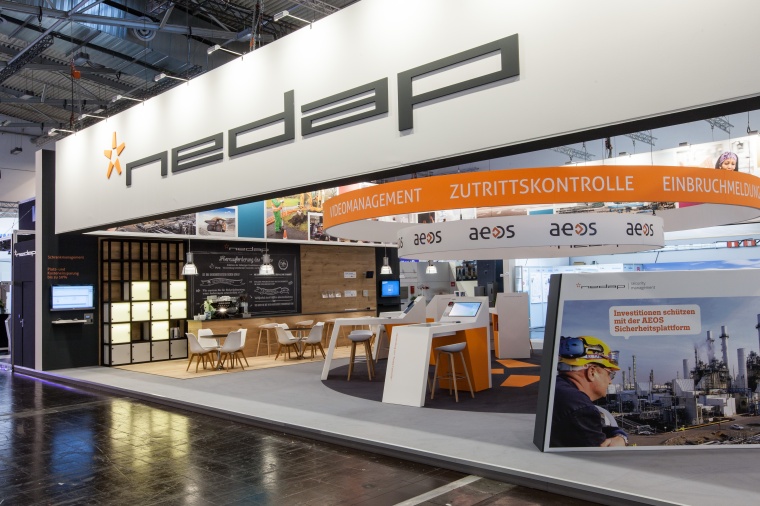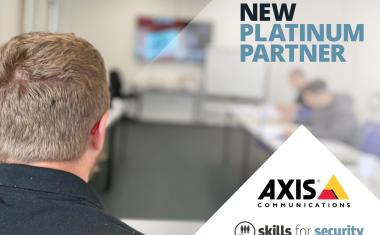Nedap responds to market demand by using software and open standards in security solutions
Nedap responds to new challenges in the field of security with the use of software components in security systems. These challenges arise from changing laws and regulations - such...


Nedap responds to new challenges in the field of security with the use of software components in security systems. These challenges arise from changing laws and regulations - such as the Act on Privacy, proposed by the European Commission - and increasing external threats, such as hackers. Under the influence of these changes, Security Managers have to deal with a completely new reality. During Security Essen, Nedap demonstrated how security systems can be directly adjusted to meet new requirements in the field of security by modifying software. Together with other opinion leaders in the industry, Nedap also considered the question of how to respond to new trends. Open standards and new software solutions play a crucial role here.
'The security world is constantly changing and new laws and regulations can have a major impact on the design of a security system. The number of threats a security system must offer protection against is also constantly increasing. This is difficult with systems that are based on hardware and which are therefore fixed and closed. These systems cannot adapt to the new reality of the Security Manager', says Ruben Wegman, CEO of Nedap. 'The only way to solve this is with software. Software modifications not only allow you to respond flexibly to current requirements, but also to new security issues in future.'
During Security Essen, Nedap showed that it is possible to respond easily to existing and future requirements by separating hardware and software. For example, by offering anti-passback as a software component, the security system can be adjusted directly to changing rules, without having to adjust hardware. Anti-passback ensures that a person cannot re-enter a building using an access badge unless the badge has first left the building. This prevents the access badge from being lent to other people.
Open standards for more flexibility
The use of open standards can also result in greater flexibility in organisations. For example, SOAA - the open standard for electronic offline locks - provides organisations with greater choice when it comes to offline locks and a more secure system. Until recently, it was hardly possible to combine multiple electronic offline locks from different suppliers into a single access control system. However, this is a requirement for many large European companies, who indicate that they will no longer be investing in these locks until there is some form of standardisation. During Security Essen, companies such as Assa Abloy, Uhlman & Zacher and Nedap showed what this standard means in practice. The open standard allows companies to easily integrate different brands of offline locks, meaning companies can now choose the product that best fits their needs. This provides the company freedom of choice and saves costs, as they are no longer tied to one supplier. The combination of open standards and software-based solutions enables companies to build on their current system, without having to constantly buy completely new systems.
Companies need a partner who can help them make a risk-free investment, and who will act as an advisor and keep them informed about new developments. Effective collaboration between suppliers is also important, partly to avoid integration problems. The integration of the new AXIS A1001 Door Controller with AEOS software is a good example of this.
most read

Skills for Security welcomes Axis Communications as new Platinum Sponsor
Skills for Security, the UK’s leading fire and security apprenticeship training provider, is proud to welcome Axis Communications as its latest Platinum Sponsor, with an aim to focus on practical skills development and raising professional standards.

Hochiki Fire Detection System Secures Villa San Carlo Hotel
Wireless and hardwired fire alarm systems can be specified in hotel projects that demand architectural sensitivity

Ajax Systems partners with Prosero Security to expand presence in Northern Europe
Ajax Systems, an international tech company and the largest manufacturer of security systems in Europe, is proud to announce a strategic partnership with Prosero Security, the Northern Europe's leader in technical security. This collaboration expands Ajax's presence in the region, allowing more businesses to benefit from its smart, integrated security systems — now delivered through a trusted local partner with deep expertise and a strong market reach.

Ksenia Security Highlights from Sicurezza 2025
Sicurezza 2025 has just concluded in Milan: For three days, the fair was a dynamic meeting point, where thousands of visitors crowded the exhibition halls, taking the opportunity to discover the latest solutions and engage with experts and industry professionals.

Wagner at Buildinx 2025: Digitalization and Sustainability in Fire Protection
Wagner presents fire protection solutions for logistics properties at Buildinx 2025 at booth 5.B80








